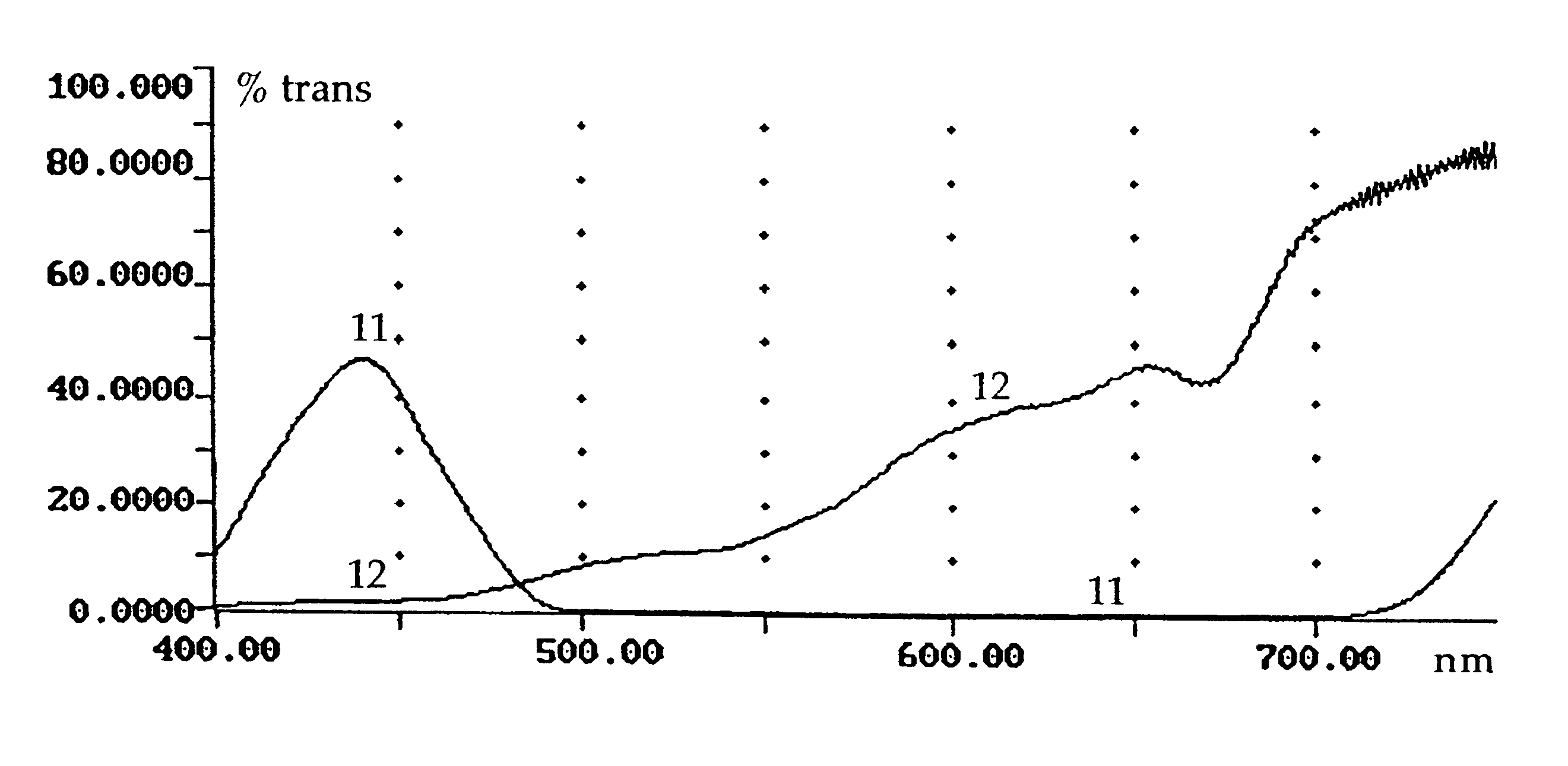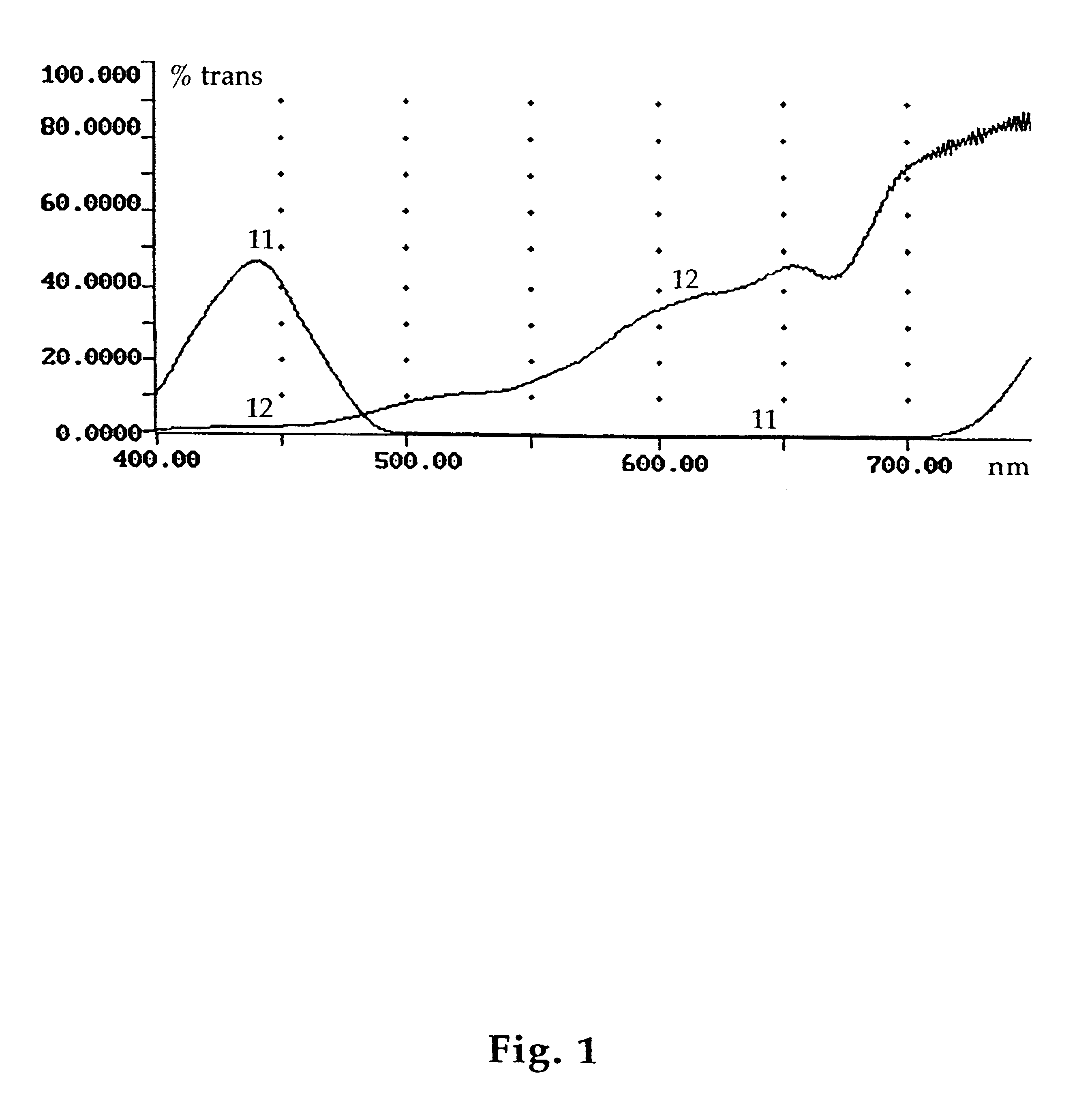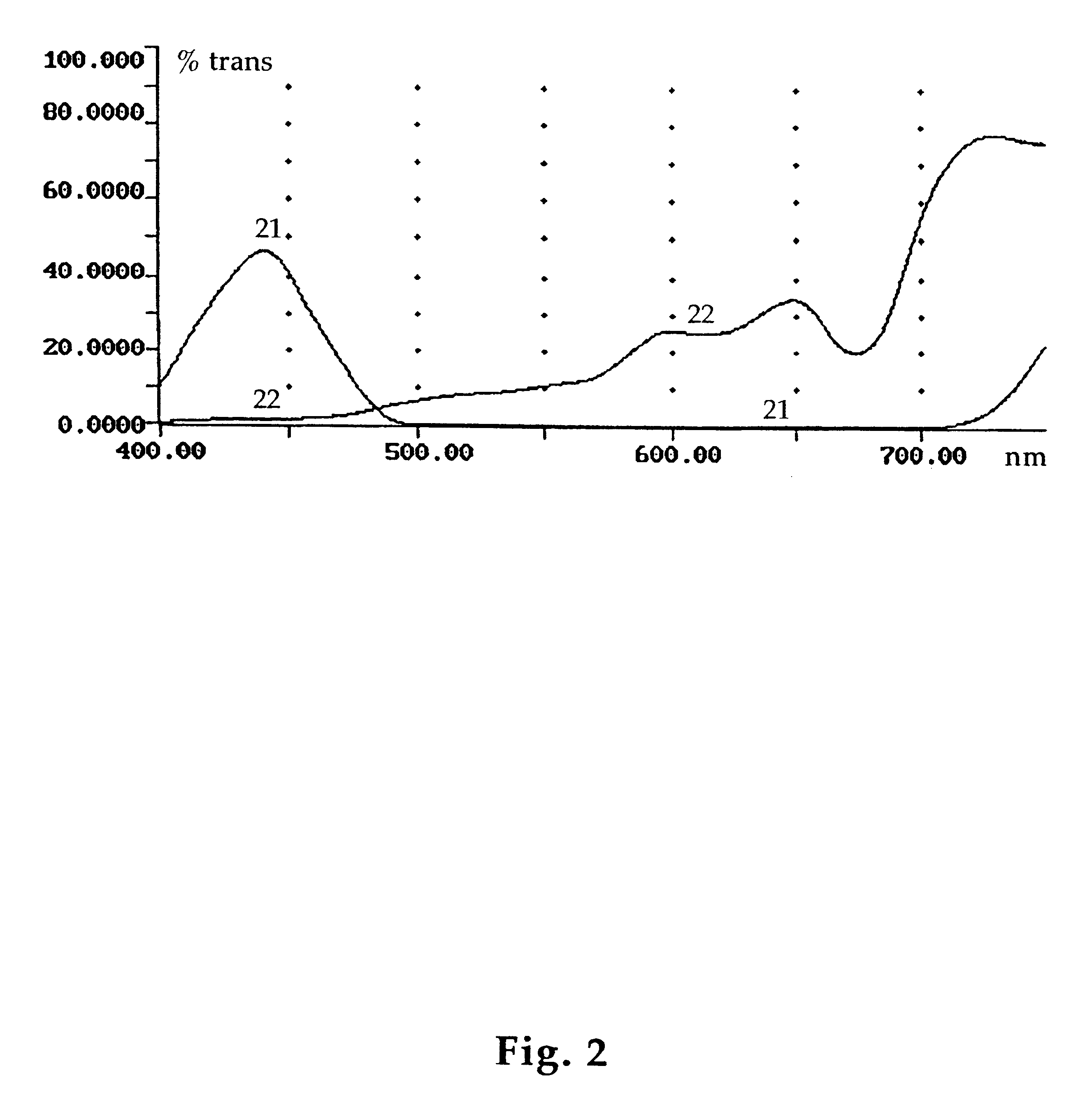Method for recording and viewing stereoscopic images in color using multichrome filters
a multi-selective filter and color technology, applied in the field of color recording and viewing stereoscopic images, can solve the problems of ghosting interfering with stereopsis to the point of complete obstruction, lightness imbalance in perceived colours, and itself is a considerable psycho-physical challenge, and achieve the effect of reducing the artefacts caused by the use of coloured viewing filters
- Summary
- Abstract
- Description
- Claims
- Application Information
AI Technical Summary
Benefits of technology
Problems solved by technology
Method used
Image
Examples
first embodiment
Thus, in a first embodiment, the invention makes use of a spectrophotometer for measuring the spectral distributions of filters combined with calorimetric computations of the passage of light of a given spectral distribution through filters of a given spectral characteristic, the computations allowing the numerical determination of the numbers R2, R21 and R1 as described above.
second embodiment
In a second embodiment, the colour deficiences are computed from the known spectral properties of the display primaries and the chosen filters, the computations optionally supplemented or replaced by observations on a series of test images, whereupon a hue shift, a hue re-parameterization, a saturation enhancement distribution and a brightness enhancement distribution are determined from formulas akin to those presented above and applied to electronic images on the picture element level, and methods and criteria for the further application of spot colour correction are chosen and applied.
third embodiment
In a third embodiment, the two partial images of a conventional stereogram are brought into some form of digital representation, the left partial image has its blue "plane" or "channel" removed, the right partial image is replaced by a monochrome image resulting as a weighted average of its R-, G- and B-planes with weights (0.15, 0.15, 0.7), and the monochrome image, considered as a one-plane image, is then substituted for the missing plane of the left partial image, see FIG. 18.
PUM
 Login to View More
Login to View More Abstract
Description
Claims
Application Information
 Login to View More
Login to View More - R&D
- Intellectual Property
- Life Sciences
- Materials
- Tech Scout
- Unparalleled Data Quality
- Higher Quality Content
- 60% Fewer Hallucinations
Browse by: Latest US Patents, China's latest patents, Technical Efficacy Thesaurus, Application Domain, Technology Topic, Popular Technical Reports.
© 2025 PatSnap. All rights reserved.Legal|Privacy policy|Modern Slavery Act Transparency Statement|Sitemap|About US| Contact US: help@patsnap.com



